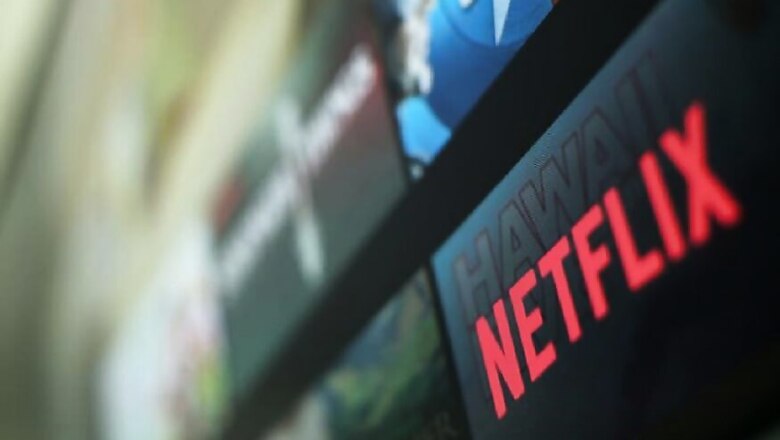
views
During the late 1980s, every Sunday at 10am, locals from my small town in north Bengal flocked outside our television shop to watch Mahabharata. Back then, a television set used to be a magical thing. It used to be a status symbol and the prized centerpiece of people's living rooms.
However, in just three decades, things have changed drastically. Today, television sets are common fixtures in 197 million Indian homes. They has become bigger (and flatter) over the years, but unfortunately, the content has gone from bad to worse. Not to say that it did not have its moments. In fact, the golden age of television brought the Gulf war, cricket matches and election coverage to people's homes. Post-liberalisation, it opened a big window to the West -- with MTV and English sitcoms.
With each passing year though, the television industry -- which thrives on advertising and aims at the lowest common denominator of the audience -- left many viewers wanting, for better quality content and for engaging shows. Therefore, international online video streaming platforms (also known as over-the-top or OTT platforms) such as Netflix, Amazon Prime Video -- when they launched in the Indian market -- quickly began catering to these eager viewers, and within a couple of years, saw exponential growth in our country.
Vijay Subramaniam, director and head of content, Amazon Prime Video India, said, "We are happy with how Prime and Prime Video have performed (in India). There has been 3X growth of Prime members since Prime Day 2017. In fact, Prime is growing faster in Tier 2/3 towns and account for close to 35% of members."
Not just Amazon Prime Video and Netflix, but many other OTTs including Indian platforms such as Alt Balaji and Viu have also been growing rapidly. However, despite several mushrooming OTTs, the television market has expanded unperturbed at a steady rate as well. While in other countries, Netflix and Amazon Prime Video have managed to cut several TV chords, and overthrown the television industry's monopoly in the entertainment market with high viewership ratings, in India things have been playing out rather differently.
The headcount: Let's talk numbers
Partho Dasgupta, CEO, Broadcast Audience Research Council India (BARC India), said that OTTs have a huge headroom to cover in terms of the sheer number of people who can access such platforms in India.
The number of subscriptions is obviously restricted by internet penetration, governmental policies on digitization and smartphone proliferation in rural areas.
"India is a price-sensitive country, and the difference in price between OTT and cable is huge. That itself is an indication why viewership on television will keep growing," said Dasgupta. Although there isn't a substantial difference in the subscription charges for cable and OTT platforms, what makes OTT platforms more expensive is the additional cost of data.
He added, "Television viewership has grown by 66% since 2015. While Urban India spends close to four hours of television per day, people in rural areas spend three hours thirty-five minutes."
According to the Broadcast India 2018 Survey, conducted by BARC India, of the 298 million homes in the country, 197 million have access to television, which is 7.5% more than the homes with television recorded in 2016. Currently, 98% of these homes have a single television and 78% have CRT sets.
Dasgupta says the television industry is bound to grow with over 100 million homes left to own a television, single television homes becoming multi-TV households and CRT television homes upgrading their sets to flat screens/LEDs/LCDs.
The survey also shows 614 million people tuned into their television sets daily and spend close to three hours fifty minutes in 2018, as compared to three hours fifteen minutes in 2015.
Indians spend a lot of time watching videos on-the-go and OTTs are steadily taking up their travel and sleep time. However, so far digital viewing has been additive to television viewing, posing no real threat to the television industry.
In most western markets (be it the US or the UK), the survey shows that Netflix and Amazon Prime have already taken over satellite TV and cable. However, in India, since the market is so big and diverse, both media have tremendous potential to grow.
As of now, television continues to be the platform with the maximum reach. Despite the growing number of smartphone users (around 300 million), the total number of television-owning individuals in the country is around 836 million. So, at least in the foreseeable future, that idiot box isn't going anywhere.
Content is King. Is it though?
The arrival of Netflix and Amazon Prime in Indian and the mushrooming of national and regional OTTs such as Alt Balaji, Viu, Voot, Sony Liv, Hotstar, Hoichoi, and Sun NXT proved beyond doubt that 'content is king' is not just a gnomic marketing catchphrase.
With no brand advertisments tailgating the shows on OTTs, and the digital space requiring no sanitizing spritz from the censor board, Indian viewers now have the liberty to choose from a plethora of intelligently made, tightly packaged, and original content on several different OTT platforms.
"Netflix gives the control back to writers. While Indian television had become a hellhole of TRP-chasing executives dictating half-brained ideas, platforms like Netflix are trying to bring writers as the drivers of content," said Varun Grover, one of the writers of Netflix's hit show Sacred Games.
Grover cannot be more correct. From Amazon Prime Video's Breathe to Alt Balaji's Bose Dead/Alive and Hoichoi's Dark Web, not only are creative people getting platforms to showcase their talents but the Indian audiences are also practically spoilt for choice.
As streaming platforms provide viewers with easily accessible high-quality content, television is still thriving on its appointment viewing. Viewer loyalty is extremely high for television, even for shows whose narratives depict a clear lack of originality and rely on hackneyed tropes to reel people in.
Also, viewership data indicates that for all big events -- be it FIFA world cup or election coverage -- viewers flock to their television. In fact, while many believe that the youth (15 to 30-year-olds) are moving towards digital, at 32%, 15 to 30-year-olds are the largest contributors to television viewership even today.
The battle to grab more eyeballs
Nachiket Pantvaidya, CEO of Alt Balaji, says while their audience is not particularly different from the urban television viewing masses, what sets their audience apart is that they "view content individually.
"Television content is viewed by audiences in the family mode," says Pantvaidya. That kind of consumer behaviour automatically guarantees more viewers per household. To grab more eyeballs, each OTT platform is coming up with a different strategy. Netflix has its big-budget original shows, and Amazon Prime Video often has the newest Bollywood releases. Alt Balaji, for example, is going glocal.
"Alt Balaji targets the diaspora audience, and also local audiences in Indonesia and Malaysia, as our content is dubbed in Bahasa Indonesia and Malaysia," said Pantvaidya. With 22 original shows, Alt Balaji is also catering to the home audience.
On the other hand, Viu thinks localization is the key to reach out to the diverse Indian market.
Vishal Maheshwari, Country Head of Viu India, says, "Viu’s content strategy is based on curating localized regional content. It is directed specifically to the millennials. While they do watch satellite television, our focus is primarily on the digital natives."
In fact, not just Viu, but Netflix and Amazon Prime Video are also trying to localize their content to access a bigger chunk of the Indian market, which has, so far, been harder to crack. Netflix has been increasing its regional library rapidly, while also acquiring indie regional films to cater to a very niche audience. Amazon Prime Video has a large number of US movies available with regional subtitles. Recent shows like The Terror are also available with regional subtitles, thus reaching a wider audience.
On who is a bigger competitor for Viu -- Netflix and Amazon Prime or cable and Satellite TV - Maheshwari said, "The biggest competition for any OTT player is the viewers’ share of mind."
Getting viewers' mindshare -- their awareness about various OTTs -- isn't an easy thing to accomplish in the OTT market, which despite being only a couple of years old in India, is not only very congested but also very competitive. However, because India is such a massive potential market, there is plenty of room for everyone to grow.
Vishnu Mohta, co-founder of Hoichoi, said, "The appetite of the consumer to consume content has increased over a period of time. Within this market, there is an interesting space, exclusively for digital consumption. It doesn't have to cater to a mass linear broadcast of the same shows going out to everyone. We can create different niches for different audiences. That's only possible in the digital space."
While digital is churning out content-driven shows for the web, several television channels have already launched their own OTT platforms because they want to give their customers access to their content anytime, anywhere. So, despite the growing number of digital natives, and viewers who are plugging in their headphones, Netflixing and chilling, it is quite clear that the majority of Indian households are far from ready to pull the plug on their televisions yet, and are, in fact, finding more dynamic ways -- like live streaming-- to get their daily dose of telly.

















Comments
0 comment